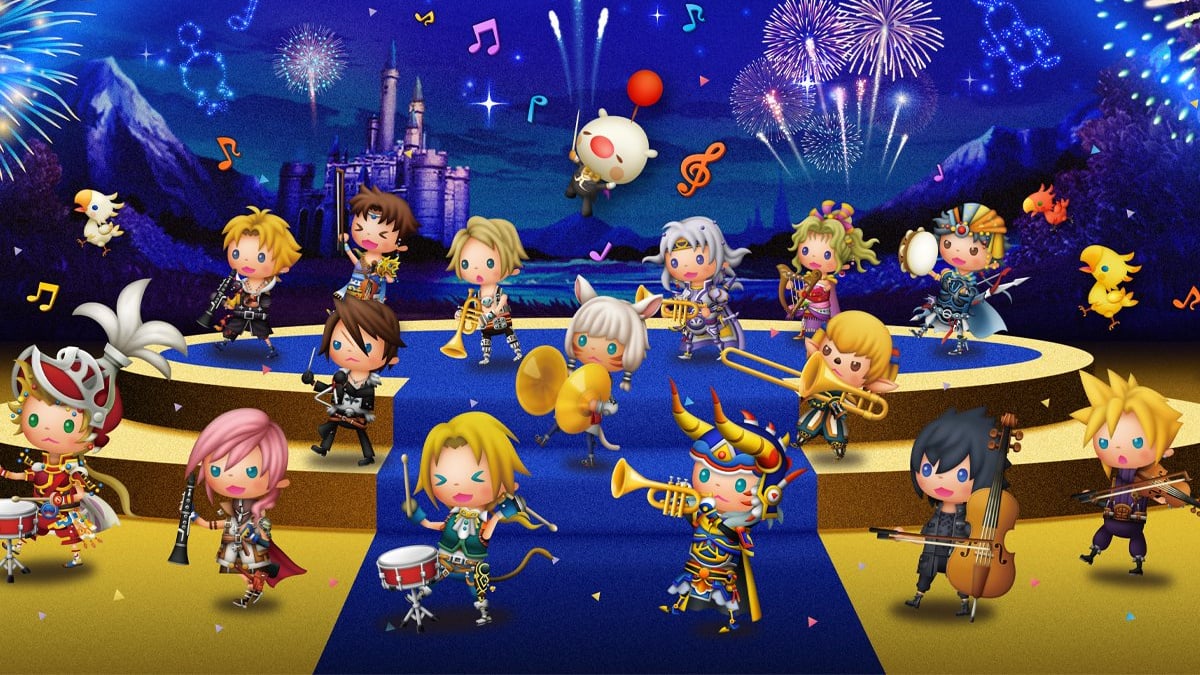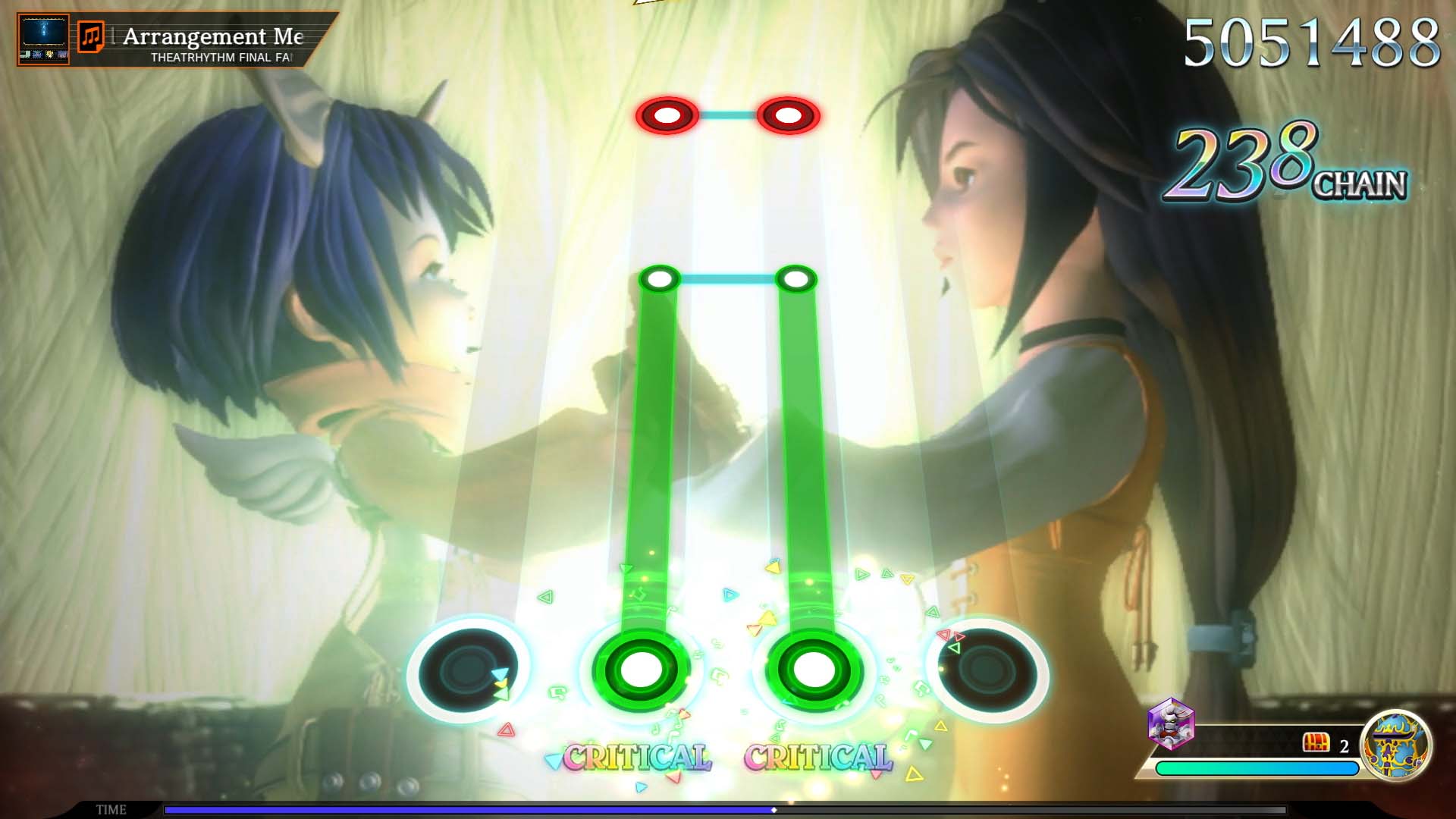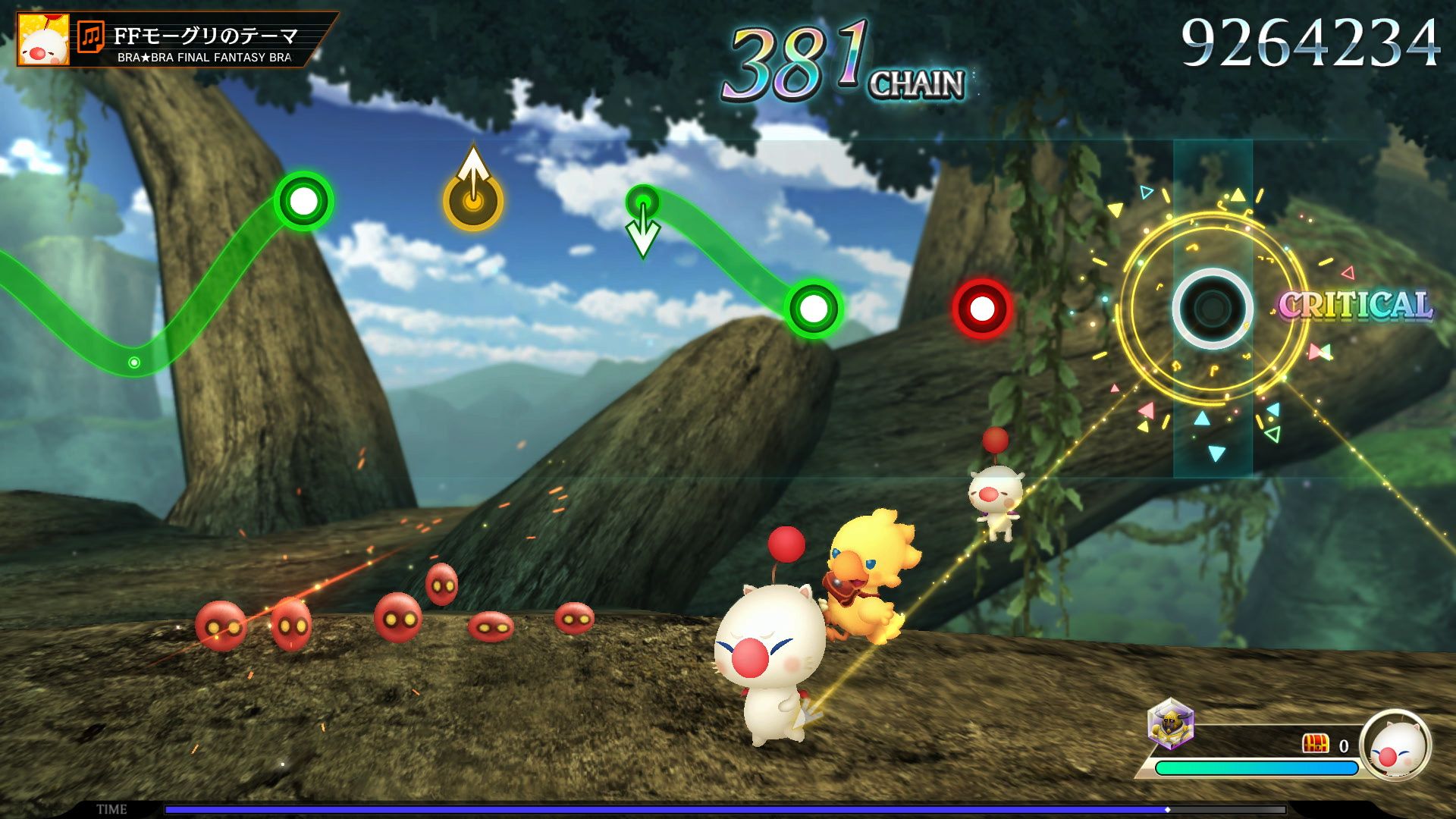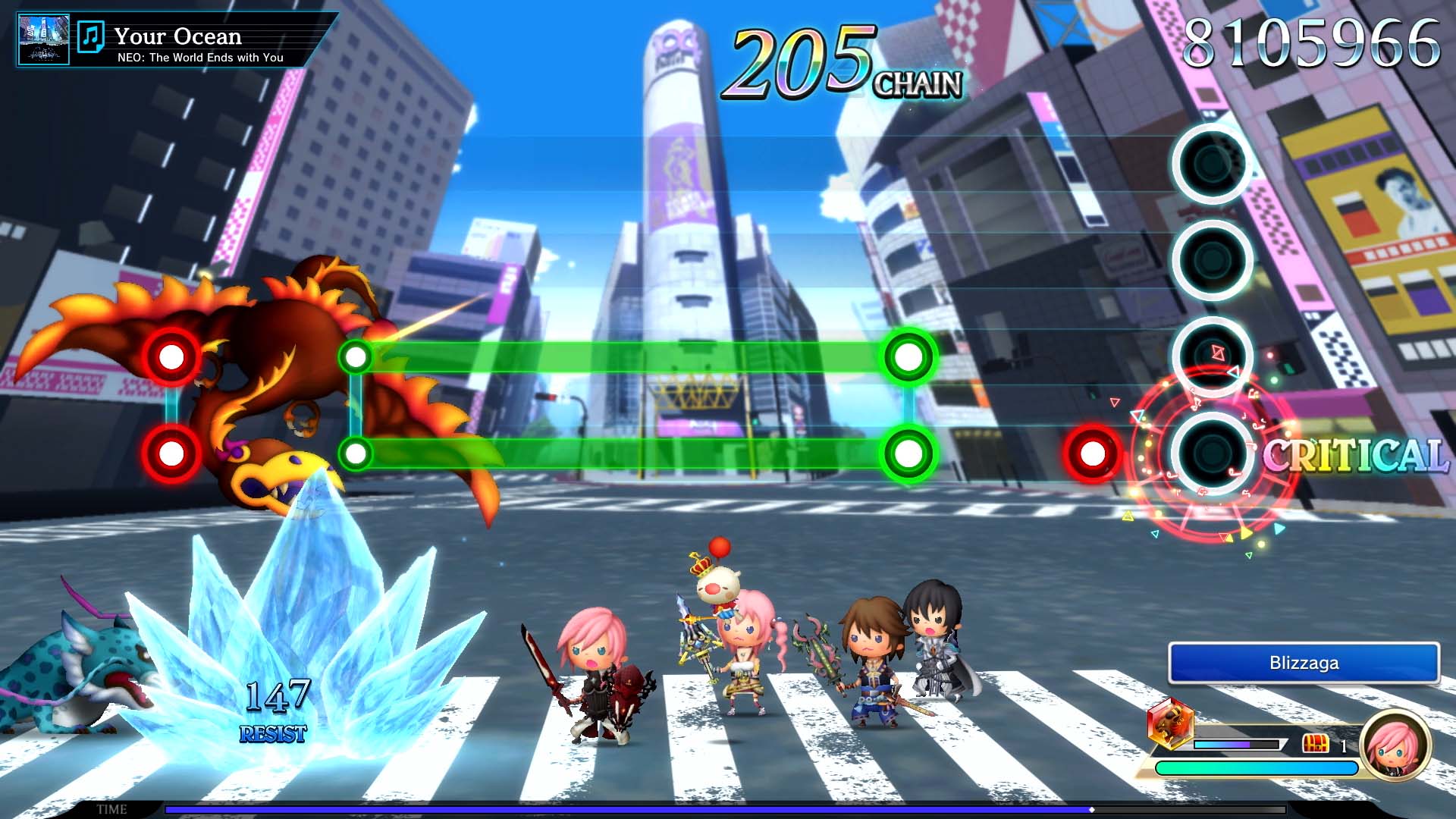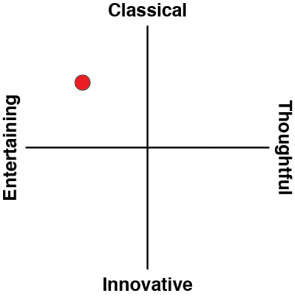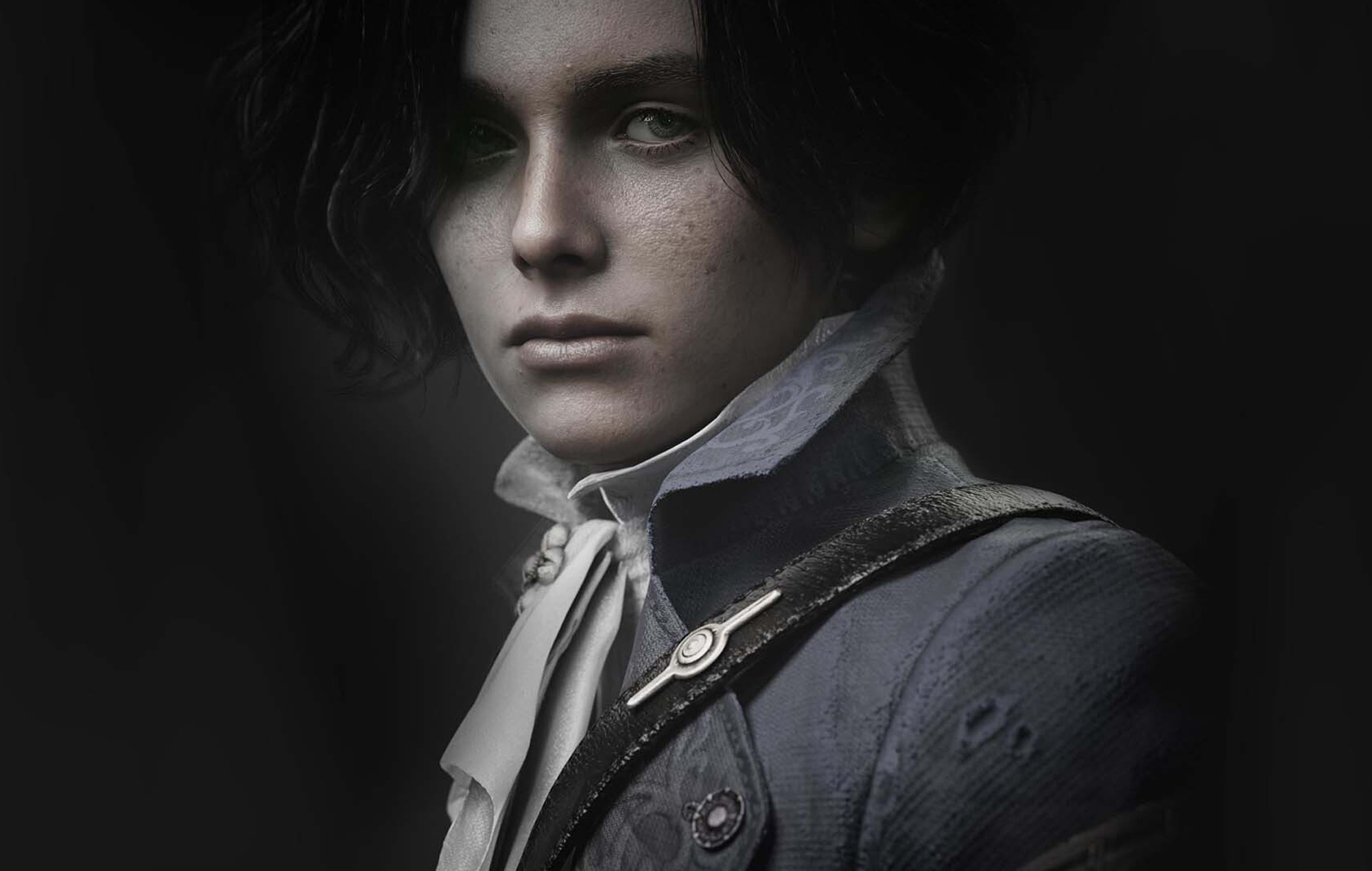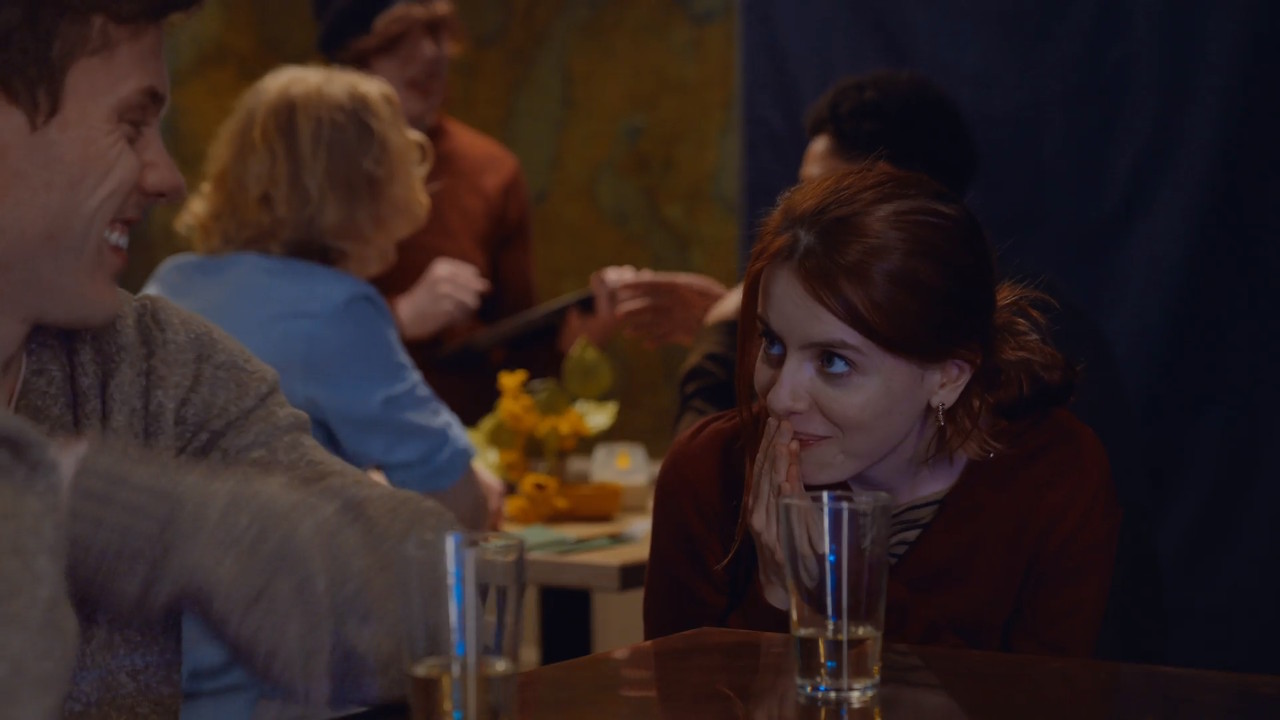Square Enix is a company that has many decades of history, and over that time has built a business filled with competitive advantages. It is a company rich with products, services and IP that are unique to it and continue to underpin its value. Perhaps its greatest single advantage of all, however, is its music. No, not its games, as popular as they are. It’s that vast, massive library of music, so much of which has become iconic. Theatrhythm Final Bar Line is almost less of a game than an incredible flex of the company, as an effort to showcase just how much of this audio gold it has to play with. The result is, of course, a wonderful game too, but it’s in the culture and heritage that’s on display here that the real magic lies.
I don’t make the claim that music underpins Square Enix’s ongoing success as a business lightly. Every time I’ve had the good fortune to be able to attend the Tokyo Game Show, the very first thing that I do on the first day is make my way to the merchandise section. There are dozens of stalls there most years, but the specific reason that I go there first is that if you aren’t through those exhibition hall doors almost instantly, you may as well forget about the Square Enix music booth. That thing is packed with long queues very quickly, and the limited edition and interesting stuff is gone almost immediately.
Or there are the concerts, which are always sold out, no matter which game or games are the focus. I had the good fortune to attend a Final Fantasy XIV concert and, again, it was notable just how quickly merchandise and souvenirs sold in the hall before the concert. Without needing to have a controller in sight, Square Enix has created a revenue stream through its music label that has an incredibly powerful cultural draw behind it.
It’s not just the in-game music that people love, either. Whether it’s a CD of all the Chocobo themes, or piano, jazz, late-nite arrangements of the most popular score, people love the underlying music rather than the games that they’re attached to (though there’s obviously some crossover), and indeed, the music has become so significant that the company can leverage it without necessarily having to try to appeal to existing fans. Whether you love Final Fantasy or not, you can’t deny that the music is excellent. This is where Theatrhythm fits in. You don’t need to be a fan of Final Fantasy, or even Square Enix games to enjoy it, though it’s lovingly wrapped in tribute to both. All you need is an appreciation of really good music.
To put just how substantial this game is in context: There are 385 tracks, each with three or four difficulty levels. If you play each track on each difficulty level just once (and that’s not going to happen, since you’ll want to replay tracks to get perfect results) then you’re looking at over 50 hours of play time. That’s just counting the time you’ll be spending playing the music tracks. It also doesn’t include anything you do outside of the rhythm game action, nor any of the DLC, of which there are at least three season passes to look forward to. For contrast, the Hatsune Miku game that I’ve put over 1,000 hours into across PlayStation, Nintendo Switch and PC “only” has around 250 songs, so I’m struggling to think of a single rhythm game that’s more loaded with content than Theatrhythm.
Music is broken up into three different types, and this is essentially the same as what we saw in the previous 3DS Theatrhythm titles. There are “battle” tracks, “field” tracks and then “special” tracks. The main difference between them is presentational – in battle tracks, you build a little team of avatars, who stand in the one spot, squared off against enemies while icons fly across the screen. You simply need to tap the right button in time with the icons arriving in a specified “zone.” Do that and your characters will attack whatever enemy they’re facing. Visually it looks approximately like what we see in older Final Fantasy games, just with much (much) cuter aesthetics, characters and monster designs.
In field tracks, meanwhile, your characters “travel” across the screen, and the music icons appear in a more “flowing” fashion to create the impression of travelling a distance. This mode is characterised by a lot of “press and hold” commands, and while it doesn’t play quite as nicely with a controller as the battle scenes, above, it’s generally paired with more peaceful and graceful music, so I personally prefer it. Finally, there are special event tracks, which are essentially important cut scenes or events from the game that the music track is attached to. A good example of this is Final Fantasy VIII’s celebrated dance scene.
What’s important to understand is that regardless of which three of these modes you look at, Theatrhythm doesn’t really do anything that plenty of other rhythm games haven’t already done. Aesthetics aside, it’s a very standard – and highly accessible – rhythm game. “Basic” mode is really very easy, and even rhythm game amateurs will be able to get perfect scores in that mode with minimal practice. The “Supreme” difficulty setting, meanwhile, is available on around 1/3rd of the tracks, and it is going to really test you. The most veteran of veteran rhythm game fans might find them a little straightforward, perhaps, but most players will never get enough practice in to perfect these. They really are designed to challenge.
All of the above is great. Final Bar Line has a mass of content and is structured to celebrate the best in all forms of Final Fantasy music. What I am significantly less of a fan of (and this was true of previous Theatrhythms, but has really “levelled up” for this one), is the effort that the developers made in trying to give the music context. There are 104 different characters to unlock and, fine, these are a nice bit of fan service. However, once you’ve unlocked them, you can put them in your parties so that they show up in the combat and exploration music tracks. But then they all have experience levels and special abilities and things. The subsequent need to balance this stuff in your parties does little more than add distracting busywork to the rhythm action. The Miku games didn’t need Miku to gain experience levels and be able to cast “heal” on Rin when she missed a note for them to be excellent rhythm games, and Square Enix really should have paid attention to the fact that the genre fares best when it is kept simple, rather than try to push JRPG mechanics into it.
On the other hand, I must admit that I love how much non-rhythm game stuff has been packed in as unlockables that can then be accessed in the museum. Again, Square Enix has such a deep heritage with Final Fantasy, that being able to drop in here to watch what feels like hours of videos, check out card collections and listen to full playlists of music is a heck of a way to reward progress.
As far as the broader experience goes, the “Story” mode, where you play a series of linked music tracks from any given game, is fairly standard and entertaining enough, but only as a means to unlock more music. Endless Mode, a feature that you’ll unlock eventually, is a really neat and lasting challenge. Here you’ll need to complete tracks that have been chosen at random, clearing specific conditions along the way. Each one becomes progressively harder, and when you fail three times your “run” is over. For the hardcore fans, the challenge of getting deeper into this will add further longevity, right up to the point that all the tracks are finally mastered (and that’s going to take hundreds of hours).
Given that the only issue with Theatrhythm Final Bar Line is that the JRPG elements are superficial and unnecessary for the game (while not actually undermining the underlying rhythm game action), it’s hard not to see the effort as a monumentally successful project. With nearly 400 music tracks out of the box, excellent underlying rhythm game mechanics and, of course, the music being so good, this is a game that’s going to last even the most casual Final Fantasy fan for months. And then there’s the DLC with music from games outside of the Final Fantasy series to look forward to. That’s only going to add even more to the biggest value game on Switch.
